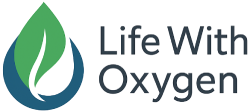Introduction
Exercise, whether it’s jogging, short running, cycling, marathons, or endurance sports like duathlons and triathlons, places significant demands on the body. As athletes push their physical limits, especially when training or competing in open environments with high pollution, their bodies require more oxygen to fuel muscles, support endurance, and prevent fatigue.
Understanding how oxygen works during exercise and how additional oxygen supplementation can help improve performance and recovery is crucial for athletes at all levels.
This article explores the physiological effects of exercise, how oxygen is utilized by the body during various types of physical activities, and the benefits of supplemental oxygen in combating issues like muscle fatigue, cramps, and recovery in polluted environments.
What Happens in the Body During Exercise?
During physical activity, the body undergoes several key physiological changes to meet the increased energy demands of muscles and organs. Here’s a breakdown of what happens:
Increased Energy Demands
- What Happens in the Body: When we exercise, especially at higher intensities, our muscles require more energy to contract and perform work. This energy comes from the breakdown of nutrients, primarily glucose, and fats, which are metabolized in the presence of oxygen.
- How Oxygen Helps: Oxygen is essential for the aerobic metabolism of glucose and fats. It helps convert these substrates into adenosine triphosphate (ATP), the primary energy currency of the body. The more intense the activity, the greater the need for oxygen to fuel muscle contractions and maintain performance.
Oxygen Delivery and Utilization
- What Happens in the Body: To meet the increased demand for oxygen, the cardiovascular system works harder. Heart rate increases, blood vessels dilate, and more blood is pumped to the muscles. This is crucial for delivering oxygen to the working muscles and clearing waste products like carbon dioxide.
- How Oxygen Helps: The muscles use oxygen to produce energy in the form of ATP through aerobic respiration. This efficient process allows the muscles to work for longer periods without exhausting their energy reserves. However, during high-intensity activities or long-duration endurance events, the body may not be able to supply enough oxygen, and anaerobic metabolism takes over.
Lactic Acid Production
- What Happens in the Body: When oxygen delivery is insufficient to meet the energy needs of the muscles, the body switches to anaerobic metabolism, where glucose is broken down without oxygen to produce energy. This process produces lactic acid as a byproduct, which accumulates in the muscles, leading to muscle fatigue, cramps, and a burning sensation.
- How Oxygen Helps: Oxygen helps prevent or clear lactic acid build-up by aiding in the efficient breakdown of glucose through aerobic metabolism. When oxygen is plentiful, muscles rely less on anaerobic processes, reducing the accumulation of lactic acid and delaying fatigue.
Muscle Fatigue and Cramps
- What Happens in the Body: As exercise continues and lactic acid builds up, muscle fibres become less able to contract efficiently, leading to muscle fatigue. In extreme cases, electrolyte imbalances caused by sweating and dehydration can lead to cramps, further limiting performance.
- How Oxygen Helps: Oxygen helps muscles recover from fatigue by supporting ATP production and clearing lactic acid from the bloodstream. It also plays a role in balancing electrolyte levels, as proper oxygenation helps regulate muscle function and prevent cramping.
Conclusion: Supporting Your Performance with Oxygen
In summary, exercise places immense demands on the body, increasing the need for energy and efficient oxygen delivery. When oxygen levels are insufficient, the body resorts to anaerobic metabolism, leading to lactic acid buildup, muscle fatigue, and cramps.
Understanding this process shows how vital oxygen is for aerobic metabolism, helping to clear lactic acid and delay fatigue. For athletes at all levels, supporting the body’s oxygen supply is key to maintaining performance, improving endurance, and accelerating recovery. Exploring options like oxygen supplements can be a valuable part of any serious training regimen.
